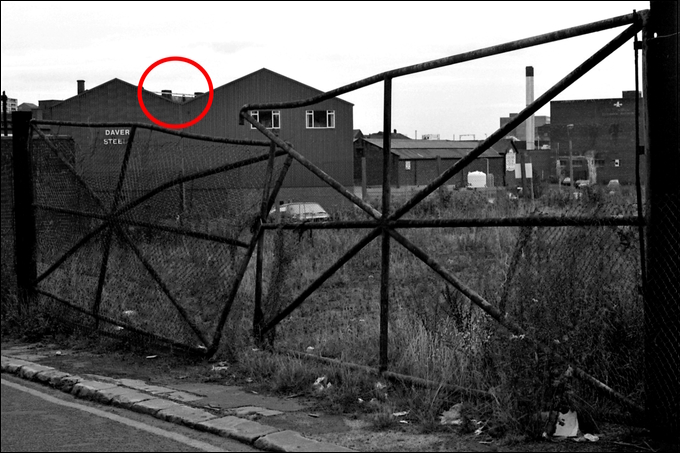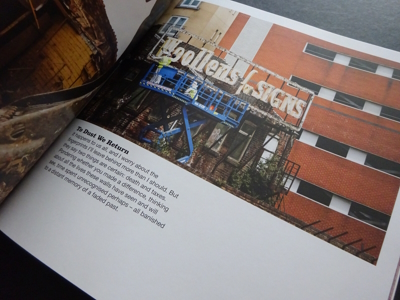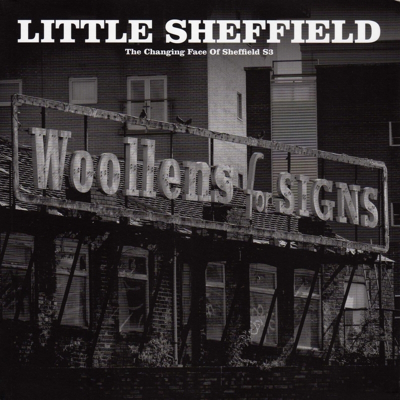The time that land forgot: an introduction to the book Little Sheffield
In his book Little Sheffield, the photographer Martin Dust zooms in on a portion of industrial Sheffield tucked inside the S3 postcode. When he asked me to write the book’s foreword, I wondered if he’d photographed the same crumbling city buildings I accidentally captured on film back in 1985…

Cities never stop changing. Whether they’re expanding or decaying, civic transformation is permanent – and yet for Martin Dust, it’s important to capture something of the ever-shifting moment even if it’s years since that moment moved on.
There’s nothing unique about that, of course. Capturing moments is just what photographers do. But the meaning of those moments is never frozen. And as time works its magic, those fragments of reality become irresistible passageways into the past.
Back in 1985, I scoped out some temporal passageways of my own when, as part of a college photography course, I took a few photos around Kelham Island and Neepsend in Sheffield – or S3 as the postman knows them. It was mostly a quick way to fill up a film, and I wasn’t aware just how dislocated from present-day reality those images would one day seem.
When Martin approached me about writing this foreword, explaining that he was documenting S3’s ongoing changes, I thought back to my old negatives and wondered whether we’d walked the same ground. I suspected not, as my photos looked like out-of-town desolation whereas Martin was focusing on a central site on Love Street – a tight dog-legged passage behind Sheffield’s mid-1990s law courts which isn’t ‘out-of-town’ at all.
But when I scrolled through my scanned images and zoomed in on one particular shot, I realised that peeping just beyond the roof of an anonymous industrial building was a length of metal framework that was easy to identify. It was a tiny portion of the neon ‘Woollens for Signs’ insignia that sits at the heart of Little Sheffield – a long-standing geographic marker that was only dismantled in 2021 (a moment that Martin captures in this book).
I hadn’t simply photographed the same Sheffield postal district. I’d snapped the exact same Love Street building that was the focus of Martin’s project – except that when I was there, there’d been another building standing in between.

Located just off West Bar, the old Woollens site and its surroundings are in the throes of development, and it’s tempting to see Martin’s photographs as the last traces of a smoke-choked, brick-stacked world. But time has never stopped churning this segment of Sheffield, and his images are conjunctions, not full stops, in a story with plenty of pages still to fill.
What’s fascinating here, though, are the details of chapters that were scrawled decades ago, even centuries ago. Before the law courts, roundabouts and dual carriageways that prescribe its modern boundaries, this triangle of land was an island of industry – blackened, cacophonous and often hellish.
Like a cluster of veins connected to Sheffield’s beating heart, it must have throbbed with life – and of course, it didn’t pulse alone. Its arteries stretched across the Don, bleeding into passages and alleys that now gape with surface car parks and plate-glass vistas, but that were once just as tight and dark as Love Street and its ilk.
Hemmed in by what’s now the city’s ever-humming Derek Dooley Way, the district also bleeds into Martin’s own past and creative career – the pubs and barbers, the rehearsal rooms and cafes, where he learned to love music and Sheffield and beer and life. In its own evocative way, Little Sheffield is a project that encompasses them all.
As for my own photographic fragment of bygone Love Street, I recently took a Google Streetview journey to the same site and compared today’s view with the one I captured in 1985.
It tells a story – but not a remarkable one.
It seems they paved the wasteland – and put up a parking lot.

Text © Damon Fairclough 2022
Images © Damon Fairclough 1985 and 2023 (all photographs in the Little Sheffield book are © Martin Dust)
This piece originally appeared in the book Little Sheffield by Martin Dust, published in 2022 by Revelations 23 Press.
It’s the third of three such pieces I’ve written for Martin Dust. The others are Unearthing the unfinished city and A very Yorkshire disaffection.
Share this article
Follow me